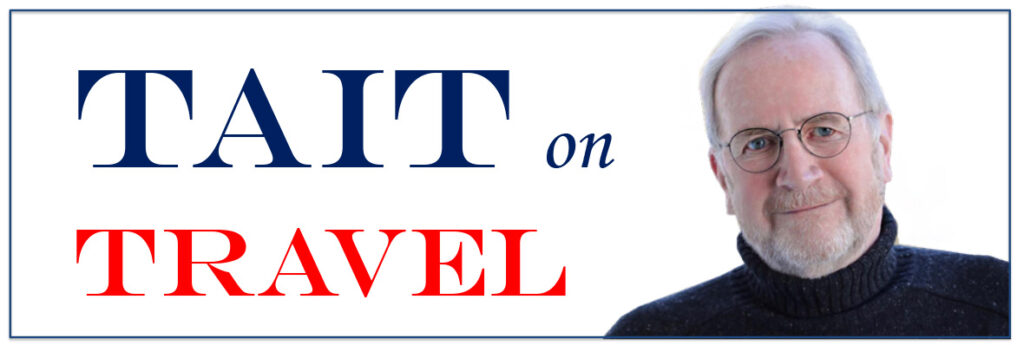Okay, so right out of the gate I’ll admit it: I have been wrong before in my opinions on aviation branding. In his 1998 autobiography ‘Losing My Virginity’ my then boss, Richard Branson, (the ‘Sir’ came later) related how, when in 1984 he first suggested the name for our nascent airline should be ‘Virgin Atlantic Airways’ I had responded, “Oh come on Richard, nobody will fly ever fly an airline called Virgin. It’s ridiculous. Who’d fly an airline that’s not prepared to go all the way?”
Strike one: Virgin Atlantic became the brand platform for scores of other Virgin businesses offering innovative products and great customer service.
Then, some years later, circa 1999, when David Neeleman told me that what had once been destined to become Virgin America (which would eventually follow seven years later) would instead be called JetBlue, my immediate reaction was to say, “Are you serious? It sounds more like a toilet bowl cleaner than an airline.”
Strike two: Like Virgin Atlantic before it, 22 years on, JetBlue is doing just fine thank you. And by the way, keep an eye on Neeleman’s latest creation Utah-based Breeze Airways, branding on which I have chosen not to comment. After all, three strikes and you’re out.
That said, despite those two inglorious “Y’re out!” moments, strike three may already be in the pitcher’s hand. Just as major league pitchers are now routinely throwing 100 mph fastballs, so too my third brand strike could be much zippier than the first two. Supersonic air travel looks to be headed for a comeback.
When, in 2003, after 27 years in service, Concorde became a museum piece, it also became one of aviation’s greatest time-machine conundrums. By a curious coincidence, 2003 also marked the 100th anniversary of the Wright brothers’ first powered flight – the Wright Flyer flew the grand distance of 852 feet in 59 seconds at an altitude of around 10 feet. By contrast, a century later, the Anglo-French Concorde flew transatlantic flight sectors at twice the speed of sound, at an altitude between 55 and 60,000 feet. What sounded like a sure thing however, turned out to be a commercial disaster.
The reasons were manifold. Only a hundred 2×2 and cramped seats. Gas guzzling engines and high fuel prices. A very limited and directionally biased (westbound) demand for Concorde’s super-expensive, higher than First Class tickets. Many of the ‘A List’ celebs and mega-rich would check it off their list so they could say, “Yeah sure I’ve flown Concorde” but then return to the greater creature comforts that came with a subsonic First Class seat. Perhaps one of the more telling tales as to the challenges faced by what BA pilots referred to as “the pointy beast” is that a senior executive from a rival airline flew it as a non-rev passenger half a dozen times: That would be me.
In any case, unless you’ve had your head buried in the proverbial sand, you have likely heard that a Californian company founded in 2014 called Boom Technology (trade name Boom Supersonic) is readying for lift off in 2029. With up to 88 passenger seats, and powered by three Rolls Royce biofuel-burning medium-bypass turbofans (without afterburners), the Boom Overture is projected to travel at slightly slower than Concorde speeds of around Mach 1.7 and have a range of approximately 7,900 km.
All this became much closer to commercial reality last month, when at US $200 million a pop, United Airlines placed an order for 15 of the new generation SST’s with an option for a further 35. This was around the same time that Aerion Supersonic, founded by gazillionaire Robert Bass, and Boom’s leading rival, announced it was folding up its tent. What was particularly interesting about the Aerion aircraft was that it laid claim to “boomless technology.” Sonic boom has of course been one of the biggest challenges to the profitable operation of supersonic aircraft as it forces route planners to stay offshore and, when flying over terra firma, reduce speeds to a subsonic plod.
Okay so as you may have guessed, here comes that too good to resist fastball right over the center of the plate.
BOOM? I mean really! It’s kind of like calling a cruise line ‘ICEBERG’ or a hotel chain ‘INSOMNIA.’ Yes, it’s supposed to be tied into the antecedent ‘sonic’ but come on, let’s be brutally honest here. Boom is an onomatopoeic word that doesn’t sit well with an air transportation business populated by customers most of whom are scared ‘youknowwhatless’ about flying on any type of airplane. But this isn’t just any airplane, it has a delta wing and flies like a bat out of hell at altitudes where you can see the curvature of the earth. So, BOOM is surely a word to be avoided.
Now as I have admitted, I have been way off base on these things before. Maybe though something like ‘Velocity’ would be less intimidating, but what do I know?
And on movie soundtracks, hasn’t “Boom, b’boom boom boom” always been the precursor to something scary? Let’s hope this pitch is well wide of the plate.

